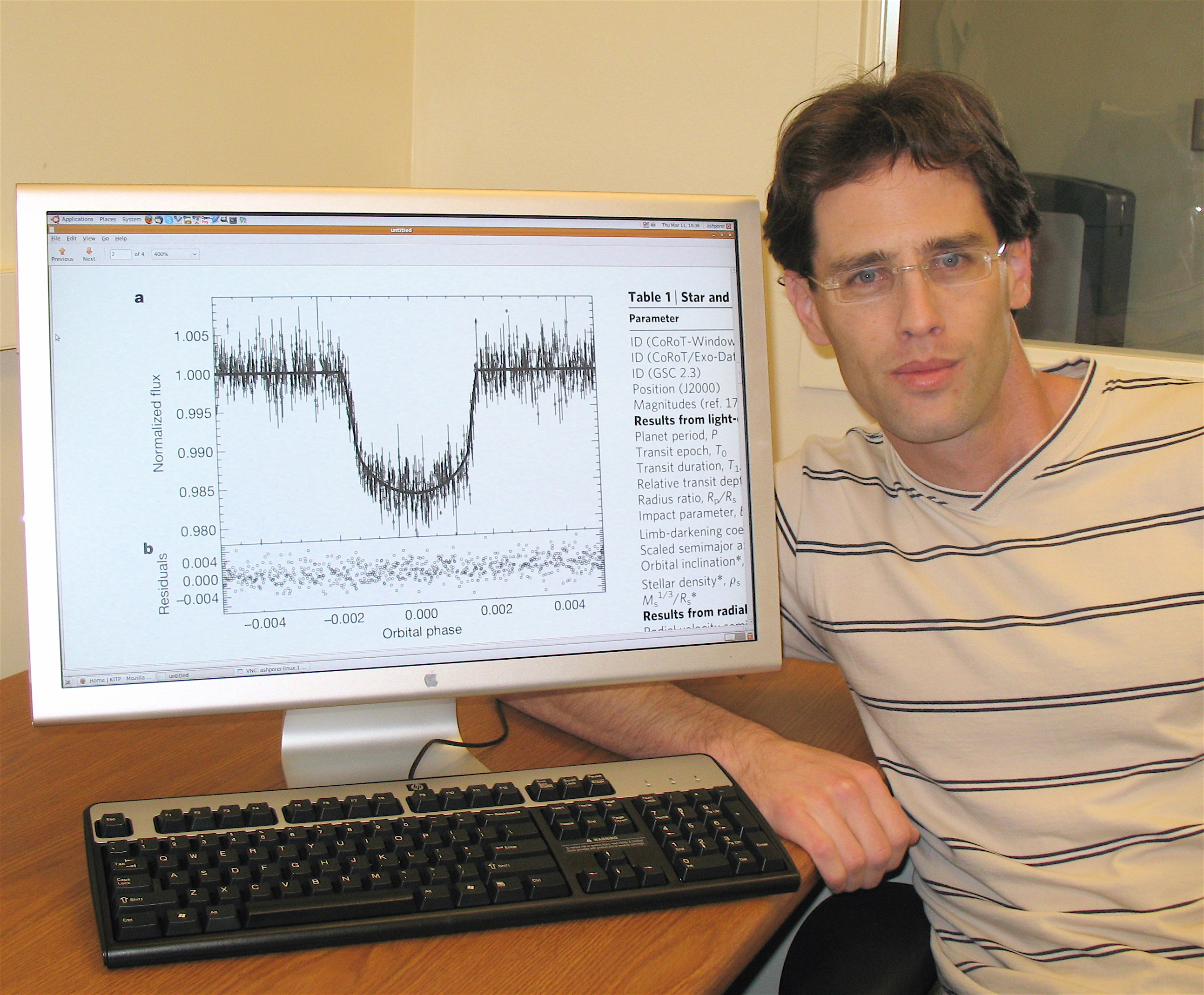
An international team of scientists, including several who are affiliated with UC Santa Barbara, has discovered a new planet the size of Jupiter. The finding is published in the March 18 issue of the journal Nature.
The planet, called CoRoT-9b, was discovered by using the CoRoT space telescope satellite, operated by the French space agency, The Centre National d'Études Spatiales, or CNES. The newly discovered planet orbits a star similar to our sun and is located in the constellation Serpens Cauda, at a distance of 1500 light-years from Earth.
The European-led discovery involved 60 astronomers worldwide. The team included UCSB postdoctoral fellow Avi Shporer, who also works with the UCSB-affiliated Las Cumbres Observatory Global Telescope Network (LCOGT), based in Goleta, California. Three more LCOGT scientists –– Tim Lister, Rachel Street, and Marton Hidas –– also contributed.
"CoRoT-9b is the first transiting extrasolar planet that is definitely similar to a planet in our solar system, namely Jupiter," said Shporer. "What is special about this planet is that it transits a star, and it is a temperate planet. It has great potential for future studies concerning its physical characteristics and atmosphere." The planet is mostly made of hydrogen and helium, but may contain up to 20 Earth masses of heavier elements including rock and water under high pressure. It thus appears to be very similar to the solar system's giant planets, Jupiter and Saturn.
A transit occurs when a celestial body passes in front of its host star and blocks some of the star's light. This type of eclipse causes a small drop in the apparent brightness of the star and enables the planet's mass, diameter, density, and temperature to be deduced. CoRoT-9b takes 95 Earth days to orbit its star. This is about 10 times longer than that of any planet previously discovered by the transit method.
The CoRoT satellite identified the planet after 150 days of continuous observation in the summer of 2008. The discovery of the planet was verified by ground-based telescopes. Those include the two-meter Las Cumbres Observatory Global Telescope
Faulkes Telescope North (FTN), located on Mt. Haleakala on the Hawaiian island of Maui. "Since a transit occurs only once every 95 days, FTN was at the right place at the right time to observe the transit in September 2009, thereby confirming the CoRoT detection," said Shporer.
He explained that while temperate gas giants are so far the largest known group of planets, CoRoT-9b is the first transiting planet of this kind. The discovery will lead to a better understanding of such commonly occurring planets and open up a new field of research on the atmospheres of moderate and low temperature planets.
Shporer notes that the study of planets outside our solar system is rapidly progressing. "Only 25 years ago no extrasolar planets were known, and today we know of more than 400," he said. "Undoubtedly, many more exciting discoveries await in the future."
The CoRoT space telescope satellite is named for "convection, rotation, and transits." France, Austria, Germany, Spain, Belgium, Brazil, and the European Space Agency (ESA) contributed to the telescope. It was specifically designed to detect transiting exoplanets and carry out seismological studies of stars. Its results are supplemented by observations from several ground-based telescopes, including the IAC-80 Teide Observatory, Canary Islands, Spain; the Canada France Hawaii Telescope, Hawaii; the Isaac Newton Telescope, Roque de los Muchachos Observatory, Canary Islands, Spain; the Swiss Euler telescope, Chile; the Faulkes Telescope North, Hawaii, part of the Las Cumbres Observatory Global Telescope Network; and, the ESO 3.6m telescope, Chile.
The Las Cumbres Observatory Global Telescope Network is constructing a network of telescopes for monitoring variable stars and explosions on the sky. In a long-term collaboration with UC Santa Barbara, LCOGT has already constructed the Byrne Observatory at UC's Sedgwick Reserve and supports collaborative research on extrasolar planets, transients, and supernovae with UCSB scientists.
Avi Shporer received his B.A. from the Hebrew University of Jerusalem, and his M.S. and Ph.D. from Tel Aviv University, Tel Aviv, Israel. He recently began a three-year postdoctoral fellowship in the Department of Physics at UCSB, and is affiliated with the Las Cumbres Observatory Global Telescope Network.
Related Links



